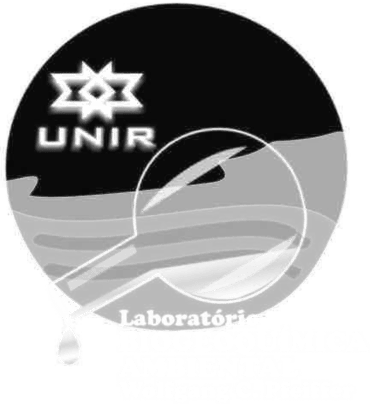Publicações 2014
Flood pulse, Mercury in sediments, Tinnitus, Riverside population, Methyl-mercury, Rio Paciá, Sul Amazonas, Mercury in Indigenous, Amazon region
ARTIGOS & PERIÓDICOS
Flood pulse and spatial dynamics of mercury in sediments in Puruzinho lake, Brazilian Amazon
Ronaldo de ALMEIDA, José Vicente Elias BERNARDI, Ronaldo Cavalcante OLIVEIRA, Dario Pires de CARVALHO, Angelo Gilberto MANZATTO, Luiz Drude de LACERDA, Wanderley Rodrigues BASTOS
Abstract: The study was conducted in Puruzinho lake (Humaitá, AM) considering seasonal periods of rainy and dry in way to elucidate the flood pulse importance in the deposition, remobilization and distributions of mercury and organic matter in bottom sediments in the Madeira River Basin (Brazilian Amazon). Bottom sediments and soils samples were analyzed for total mercury and organic matter. Mercury concentrations obtained in bottom sediment were 32.20-146.40 ng g⁻¹ and organic matter values were 3.5 - 18.0%. The main region for accumulation of mercury and organic matter was in the central and deepest lake area In the rainy season there was a greater distribution of Hg and organic matter, mainly controlled by means of income of the Madeira river water during flooding, while the predominant process in the dry season was the remobilization of total Hg due to the resuspension of bottom sediments.
Tinnitus in a riverside population exposed to methyl-mercury
Nathalia Alves Cardoso, Ana Cristina Hiromi Hoshino, Maurício Andrade Perez, Wanderley Rodrigues Bastos, Denise Pires de Carvalho, Volney de Magalhães Câmara
Abstract: Purpose: To study the association between the prevalence of tinnitus and mercury exposure and measure the influence of tinnitus on the quality of life. Methods: We conducted a cross-sectional study of men and women aged above 18 years residing in the Lake Puruzinho region, which is located on the left bank of the Rio Madeira, Humaita city, Amazonas state, Brazil. All subjects underwent anamnesis, otorhinolaryngologic evaluation, and an audiology test. Individuals who experienced tinnitus completed the translated Tinnitus Handicap Inventory (THI). We also examined the levels of total mercury in the hair of these individuals. Results: To analyze the results regarding the prevalence of tinnitus, the subjects were divided into two groups according to the presence or absence of tinnitus. Group 1 was composed of subjects with tinnitus and Group 2 was composed of subjects without tinnitus. Consequently, 40% of individuals had scores consistent with mild handicap according to the THI. The analysis of the association between tinnitus and levels of total mercury in hair samples showed that both groups had high levels of mercury. However, this finding was not significantly different between groups. Conclusion: Herein, 25% of the subjects complained of tinnitus and significant exposure to mercury; however, there was no association between the prevalence of tinnitus and high levels of mercury.
Levantamento de Solo em Diferentes Ambientes Geomorfológicos e Sistemas de Uso da Terra na Microbacia Hidrográfica do Rio Paciá - Sul Amazonas
Joiada Moreira da Silva Linhares, Wanderley Rodrigues Bastos, Déborah Pereira Linhares da Silva, Ernando Balbinot, osé Omar da Silva e Paulo Victor de Albuquerque Maia
Abstract: A expansão dos sistemas agropecuários tem transformado o espaço agrário sul amazônico, em especial o meio rural do município de Lábrea - AM. Neste ambiente as grandes manchas de solo foram classificadas em mapeamentos exploratórios como de baixíssima fertilidade. Mas, em áreas menores pode haver solos férteis, originários de processos naturais ou antropogênicos. Neste contexto o objetivo deste estudo foi realizar o levantamento das principais classes de solo e suas características geoquímicas em diferentes sistemas de uso da terra na microbacia hidrográfica do rio Paciá - Amazonas. Os procedimentos metodológicos foram organizados em etapas: 1) preparação da base cartográfica e processamento digital de imagens; 2) observação do uso e cobertura da terra e amostragem do solo; 3) procedimentos laboratoriais; 4) análise espacial e não-espacial. Os resultados indicam que os solos são ácidos, com pH entre 3,9 a 5,1, exceto na área de várzea onde a acidez é moderada. Na área de estudo, identificou-se a ocorrência de cinco classes de solo: Latossolo, Argissolo, Gleissolo, Neossolo e Plintossolo.
Mercury in Indigenous, Introduced and Farmed Fish from the Semiarid Region of the Jaguaribe River Basin, NE Brazil
L. D. Lacerda • B. G. B. C. Costa • D. N. Lopes • K. Oliveira • M. F. Bezerra • W. R. Bastos
Abstract: Indigenous, introduced and farmed fish species were collected from the Jaguaribe Basin, NE Brazil to assess total and methyl mercury concentrations in muscle tissue and to determine its relationship with fish origin. The results obtained from introduced species were compared to the Hg content of their original area of occurrence, which is located in the Amazon region. Farmed and wild individuals of Oreochromis niloticus (tilapia) were also compared. Introduced species presented lower Hg contents compared to their Amazonian counterparts. Wild individuals of O. niloticus also presented higher Hg contents than farmed individuals with similar sizes. However, methyl Hg concentrations were not significantly different between the two groups. Total Hg and methyl Hg concentrations were higher in carnivorous species, especially those from the Amazon region, and surpassed the Brazilian guidelines for fish consumption. Based on their Hg content, Jaguaribe basin fish do not pose a significant threat to human consumption.





